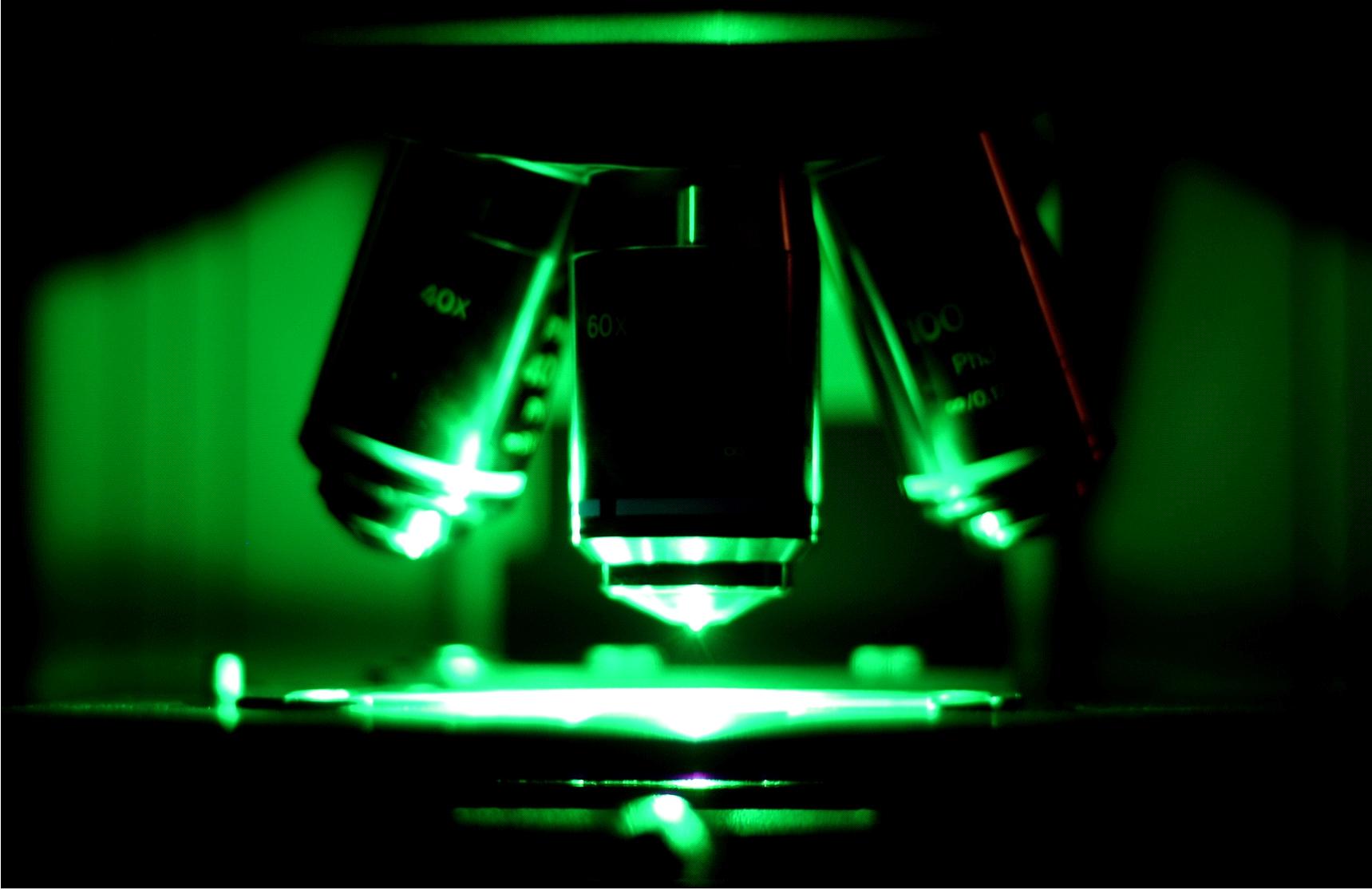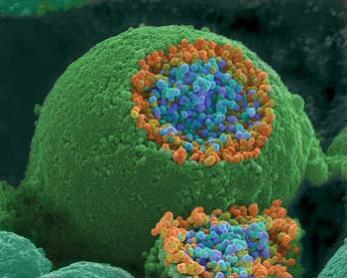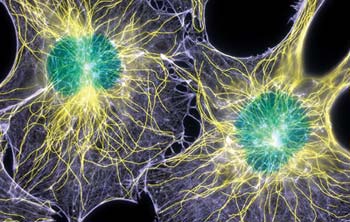Cells Fact Sheet

Thirty Years Ago
- Scientists had described, isolated, and characterized organelles, the specialized substructures that carry out much of the cell’s business. But they knew little about how organelles adapt to changes in the cell’s environment or modify their function to meet the cell’s constantly changing biochemical needs.

- Cellular fats called lipids were identified as being important, but their functions remained unknown.
- Scientists debated the existence of channels in cell membranes that would allow molecules to flow into and out of cells.
- The cell’s structural framework was just being explored. The protein myosin was the only molecule known to move the cell or its organelles.
Today
- Scientists realize that cells are intricately structured and highly dynamic. The nature and molecular makeup of many internal features have been discovered.
- Advances in microscopy, especially real-time light microscopy, and molecular labeling are allowing scientists to track the complex movements of ions, molecules, and organelles within living cells.
- Researchers are investigating cellular transport systems that move organelles, chromosomes, and other molecular structures inside the cell. They have characterized three major families of molecular motors—myosins, kinesins, and dyneins—that push and pull cellular structures. They have also studied the cables—microtubules and actin—along which these motors move.
- Scientists have discovered drugs such as the anti-cancer agent paclitaxel (Taxol®) that work by disrupting dynamic processes within the cell. Paclitaxel blocks the disassembly of microtubules, which is necessary for cancer cells to divide or reproduce.
- Scientists have begun to understand how cells make proteins. After decades of work, researchers have captured high-resolution images of the ribosome, the cellular machine that assembles proteins. These images show how dozens of molecules work together in the processes that convert genetic information into functional proteins.
- Studies suggest that proteins are protected and directed throughout their existence by specialized molecules called chaperones.
- Research on lipids, especially cholesterol, and their roles in cellular transport and regulation has led to the development of potent cholesterol-lowering drugs known as statins.
- We know that membrane channels are necessary for many biological processes, including brain function, digestion, insulin release, hearing, seeing, smelling, and the beating of the heart. Thanks to new technologies, scientists have described the function of numerous membrane channels and captured high-resolution images of them. As a result, we have a more detailed understanding of how these channels open and close and why flaws in the channels cause disease.
 To transport certain molecules to specific locations, cells use bubbles called vesicles. By studying model organisms, scientists have learned that vesicles are critical to the function of neurotransmitters (molecules that transmit messages within the brain) and certain blood and liver cells. To transport certain molecules to specific locations, cells use bubbles called vesicles. By studying model organisms, scientists have learned that vesicles are critical to the function of neurotransmitters (molecules that transmit messages within the brain) and certain blood and liver cells.
- Scientists have learned that cellular housekeeping—quickly eliminating molecules that are defective or no longer needed—is vital to keeping cells healthy. They have discovered biochemical pathways and organelles that cells use to get rid of unwanted proteins. Defects in these systems underlie several diseases, including Alzheimer's and Parkinson's and some cancers.
- Studies of individual molecules continue to shed light on important life processes. But now, advanced research tools and powerful computers also allow cell biologists to examine complex biochemical pathways and dynamic interactions between hundreds of molecules.
- Scientists have identified dozens of components of the extracellular matrix (ECM), the complex mix of molecules, minerals, and fluids that surround cells. The ECM provides cells with support, structure, and lubrication; allows cells to communicate with their environment and each other; plays an important role in embryonic development; and contributes to the overall texture and physical properties of tissues. ECM defects are linked to a variety of diseases, including atherosclerosis, brittle bone disease, kidney failure, certain types of deafness, and muscular dystrophy.
Tomorrow
- Cell biologists will routinely use computational modeling and network theory to study and simulate cellular processes.
 Researchers will understand the cell as a functioning, complex, and adaptive machine. They will be able to integrate databases of genes, proteins, lipids, and other cellular components into investigations of the function, location, timing, speed, and control of molecular interactions. Researchers will understand the cell as a functioning, complex, and adaptive machine. They will be able to integrate databases of genes, proteins, lipids, and other cellular components into investigations of the function, location, timing, speed, and control of molecular interactions.
- Scientists will obtain ever-more-detailed images of living cells.
- Deeper understanding of molecular travel within and between cells will lead to the development of improved drug delivery systems, including those that transport medicines to specific cell types or subcellular components.
- Advances in studying membrane dynamics and chemistry will lead to medicines that work better and have fewer side effects.
- An increased understanding of cellular processes will lead scientists to discover and design drugs that work in ways entirely different from medicines currently on the market.
Content created November 2006
|
